
CULTURAL CRITIQUE
Scope & Guideline
Illuminating Cultural Phenomena with Academic Rigor
Introduction
Aims and Scopes
- Interdisciplinary Cultural Analysis:
The journal synthesizes insights from multiple disciplines, providing a platform for diverse methodologies and theoretical frameworks to analyze cultural phenomena. - Focus on Marginalized Narratives:
Cultural Critique prioritizes the examination of underrepresented groups and issues, fostering discussions around race, gender, sexuality, and class in contemporary society. - Digital Culture and Technology:
The journal critically engages with the implications of digital media and technology on cultural practices and identities, exploring how these elements shape social dynamics. - Global Perspectives:
Cultural Critique emphasizes transnational and global viewpoints, analyzing cultural expressions and movements across different geographical contexts. - Critical Engagement with Popular Culture:
The journal interrogates popular media forms, including television, film, and online platforms, to reveal underlying cultural narratives and power structures.
Trending and Emerging
- Digital Activism and Queer Politics:
An increasing number of publications focus on how digital platforms facilitate queer activism and identity formation in a global context, highlighting the interplay between technology and social justice. - Transnational Feminisms:
The journal is witnessing a rise in discussions around transnational feminist movements that address global inequalities and intersectional struggles, reflecting a broader understanding of gender politics. - Racialized Media Representations:
Emerging themes are centered on the analysis of racial dynamics in media, particularly how representations of race intersect with other identities in contemporary cultural narratives. - Cultural Responses to Global Crises:
Recent works are increasingly reflecting on cultural responses to crises such as the COVID-19 pandemic, focusing on themes of resilience, solidarity, and the reconfiguration of cultural practices. - Decolonial and Indigenous Perspectives:
There is a growing interest in decolonial frameworks and Indigenous knowledge systems, which challenge dominant cultural narratives and advocate for alternative understandings of history and identity.
Declining or Waning
- Traditional Feminist Frameworks:
There appears to be a shift away from conventional feminist analyses toward more intersectional and inclusive approaches that consider race, class, and sexuality. - Focus on Western-centric Cultural Studies:
The journal has increasingly moved away from Eurocentric perspectives, as more emphasis is placed on global and localized cultural studies that challenge dominant narratives. - Static Representations of Identity:
Earlier works that presented fixed identities are being replaced by fluid and dynamic explorations of identity, reflecting contemporary understandings of gender and sexuality.
Similar Journals

ENGLISH LANGUAGE NOTES
Illuminating the Complexities of Language and LiteratureENGLISH LANGUAGE NOTES is a premier journal published by the University of Colorado, dedicated to the field of literature and literary theory. With a strong impact in academia, it holds a prestigious Q2 ranking in the 2023 category, emphasizing its importance among scholarly publications. The journal, indexed under ISSN 0013-8282 and E-ISSN 2573-3575, has been a crucial resource since its inception in 1969, featuring converged years from 1969, 1977, and 1982, through to 2024. The editorial board promotes rigorous scholarship and encourages contributions that explore the complexities of the English language across diverse literary contexts. While it does not offer open access, ENGLISH LANGUAGE NOTES remains a vital source for researchers, professionals, and students invested in the sustained exploration of literary arts, evidenced by its strong Scopus ranking in the 79th percentile in its field. For those committed to advancing literary scholarship, this journal serves as an invaluable platform for discussion and dissemination of influential ideas.

Journal of Religion and Popular Culture
Bridging the Gap Between Religion and Contemporary CultureJournal of Religion and Popular Culture is a unique academic platform dedicated to the exploration and analysis of the intricate relationships between religious practices and popular culture. Published by University of Toronto Press, Inc., this journal provides a critical forum for scholarly discourse, appealing to researchers, students, and professionals in the fields of Cultural Studies and Religious Studies. Since its inception in 2013, the journal has established itself as a significant contributor to the academic community, evidenced by its current category quartiles: Q4 in Cultural Studies and Q3 in Religious Studies as of 2023, alongside its Scopus rankings. Although it operates on a subscription basis, the journal's accessibility enhances its reach within the scholarly community. With a focus on fostering interdisciplinary dialogue, the Journal of Religion and Popular Culture invites contributions that illuminate the dynamic interplay between faith and the vibrant expressions of popular culture, making it a vital resource for understanding contemporary societal trends.
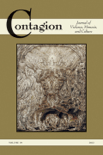
Contagion-Journal of Violence Mimesis and Culture
Engaging with the Cultural Reflections of Human AggressionContagion: Journal of Violence, Mimesis and Culture is a premier academic journal published by Michigan State University Press, dedicated to exploring the intricate relationships between violence, cultural representation, and mimesis. With an ISSN of 1075-7201 and an E-ISSN of 1930-1200, this journal serves as a conduit for scholarly discourse in fields such as Cultural Studies, Literature and Literary Theory, Philosophy, Religious Studies, and Sociology and Political Science. Despite its classification in quartiles Q4 and Q3 in various academic ranks, this journal is pivotal for those investigating the deeper implications of violence in cultural contexts, providing insights that resonate across disciplines. It has converged its thematic focus from 2010 to 2024, addressing critical and contemporary issues surrounding mimesis and societal reflection. While currently not available as an open-access publication, it offers valuable access options for a diverse readership, including researchers, professionals, and students, committed to understanding the complexities of human behavior through the lens of culture and violence.
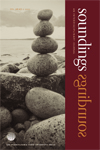
SOUNDINGS
Navigating Complex Societal Dynamics Through ScholarshipSOUNDINGS, published by Penn State University Press, stands as a notable journal within the realms of the arts and humanities, cultural studies, and sociology and political science. With its ISSN 0038-1861 and E-ISSN 2161-6302, this academic periodical has been a platform for critical discourse and innovative research since its inception in the mid-1970s, although it has experienced several convergence periods. Though currently categorized in Q4 within its respective fields, including rankings that reflect its growing influence, SOUNDINGS continues to provide a rigorous space for interdisciplinary dialogue and scholarly reflection. Despite the absence of open access, the journal’s comprehensive articles are vital for researchers, professionals, and students seeking to deepen their understanding of complex cultural and societal dynamics. With its headquarters located at 820 North Univ Drive, U S B 1, Ste C, University Park, PA 16802, SOUNDINGS invites its readership to engage with contemporary issues through a rich lens of academic inquiry.
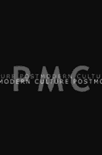
POSTMODERN CULTURE
Decoding the Complexities of PostmodernismPOSTMODERN CULTURE, published by Johns Hopkins University Press, is a pivotal journal in the fields of Cultural Studies, Literature and Literary Theory, and the Visual Arts and Performing Arts. With a focus on the nuances of postmodern theory and its interdisciplinary applications, the journal has established itself as an essential resource for researchers and scholars seeking to explore contemporary cultural phenomena through innovative critical lenses. Compiling works from 2002 to 2023, it is indexed with notable rankings, including Q2 in Literature and Literary Theory and Q3 in Cultural Studies, reflecting its significant contribution to persistent academic discourse. While not open access, the journal ensures that access to groundbreaking research is available to libraries and institutions, reinforcing its importance in the scholarly community. POSTMODERN CULTURE serves not only as a repository of academic inquiry but also as a catalyst for new ideas, stimulating dialogue among professionals and students alike in understanding the complexities of today's cultural landscape.
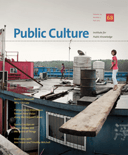
PUBLIC CULTURE
Advancing Interdisciplinary Insights into Public Culture.PUBLIC CULTURE is a distinguished journal published by DUKE UNIVERSITY PRESS, known for its critical engagement with contemporary cultural studies and interdisciplinary scholarship. As a leading platform since its inception in 1996, PUBLIC CULTURE examines the intersections of culture, politics, and various social paradigms, fostering dialogue that challenges conventional wisdom and encourages innovative perspectives. With an impact factor that reflects its robust academic contribution, the journal is indexed in Scopus and spans multiple disciplines, ranking within the top quartiles in Arts and Humanities as well as Communication. Although it operates under a traditional subscription model, its scholarly output significantly influences fields within social psychology and related areas, making it an essential resource for researchers, professionals, and students seeking to engage with the dynamic landscape of public culture. With its commitment to publishing high-quality articles that explore the complexities of cultural phenomena, PUBLIC CULTURE remains a vital conduit for scholarly exchange and discovery.
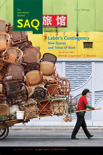
SOUTH ATLANTIC QUARTERLY
Navigating the Intersection of Humanities and Social SciencesSOUTH ATLANTIC QUARTERLY, published by DUKE UNIVERSITY PRESS, stands as a pivotal journal within the fields of Cultural Studies, Literature and Literary Theory, and Sociology and Political Science. With its rich historical foundation dating back to its inception in 1907, the journal has continuously provided a platform for rigorous scholarship and critical discourse. It has consistently achieved remarkable rankings, holding a distinguished place in the Q1 category across its relevant fields as of 2023, demonstrating its significant impact with Scopus rankings positioning it in the top percentiles. Though not an open-access journal, it offers a valuable repository of interdisciplinary insights that appeal to researchers, professionals, and students alike. The South Atlantic Quarterly remains essential for anyone looking to engage deeply with contemporary and historical issues spanning a broad spectrum of cultural and societal contexts, particularly through its insightful articles and critical reviews published biannually. Explore the multifaceted dimensions of the humanities and social sciences with this renowned journal, renowned for its commitment to intellectual rigor and innovative scholarship.
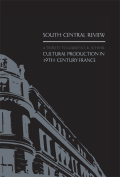
South Central Review
Navigating the Complexities of Southern NarrativesSouth Central Review, a distinguished academic journal published by Johns Hopkins University Press, serves as a vital platform for scholarly discourse in the fields of cultural studies, literature and literary theory, philosophy, and the visual and performing arts. With an ISSN of 0743-6831 and an E-ISSN of 1549-3377, this journal is dedicated to highlighting innovative research and critical analyses that explore the complexities of Southern culture and its broader implications. Although it operates without an open access option, the journal is recognized for its rigorous peer-review process and contributions to contemporary academic dialogue, holding Q3 and Q4 rankings across several disciplines as of 2023. The convergence of ideas and perspectives from diverse academic backgrounds positions the South Central Review as an essential resource for researchers, professionals, and students seeking to deepen their understanding of the cultural narratives shaping our world today.
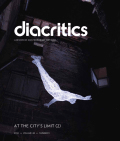
DIACRITICS-A REVIEW OF CONTEMPORARY CRITICISM
Exploring the Frontiers of Literary ThoughtWelcome to DIACRITICS: A Review of Contemporary Criticism, a distinguished journal published by Johns Hopkins University Press, specializing in the interdisciplinary fields of literature and literary theory. With an impressive impact factor that places it in the top quartile of its category, DIACRITICS is recognized for its rigorous scholarship and critical insights, ranking #93 out of 1106 journals in Arts and Humanities Literature and Literary Theory according to Scopus. This journal, which has been continually publishing significant work since its inception, focuses on contemporary literary criticism, engaging scholars, professionals, and students in thoughtful discourse on relevant issues and transformative trends in the field. Although not open access, it provides a rich resource for those seeking to deepen their understanding of critical theory and literature. We invite you to explore the innovative perspectives and scholarly contributions that DIACRITICS offers, ensuring a vibrant exchange of ideas and fostering academic excellence.

Anclajes
Bridging Theories and Cultures for Global UnderstandingAnclajes is a prominent academic journal dedicated to the fields of Cultural Studies, Linguistics, and Literature, published by the UNIV NACIONAL LA PAMPA, FAC CIENCIAS HUMANAS. With both print (ISSN 0329-3807) and electronic (E-ISSN 1851-4669) formats, the journal has embraced an Open Access model since 2010, greatly enhancing its accessibility and reach to a global audience. Based in Argentina, Anclajes provides a platform for innovative research and critical discourse, contributing significantly to the understanding of cultural phenomena and literary theories. In recent years, the journal has established itself with a Scopus rank placing it in the top 30% of Literature and Literary Theory and the top 57% of Cultural Studies, as indicated by its quartile rankings for 2023. With issues converging from 2012 to 2024, Anclajes continues to foster scholarly communication and serves as an essential resource for researchers, students, and professionals seeking to explore the dynamism of human culture and expression.